This article was co-authored by Kara Hartl, MD, FACS. Dr. Kara Hartl is a board certified Ophthalmologist and the Founder and CEO of Mountain View Eye Center in Fairbanks, Alaska. Dr. Hartl is a blue light expert and specializes in studying the effects of natural and artificial light on people’s eyes and bodies. She received a BA in Biology from Harvard University and earned her Doctor of Medicine (MD) from The University of California-San Diego Medical School. Dr. Hartl also trained at the world-renowned Bascom Palmer Eye Institute. She is passionate about incorporating technology into the future of eye care and has started a public education initiative to inform everyday LED screen users about the effects and the easy ways to protect themselves while continuing to use their devices. Dr. Hartl also founded the international non-profit, Gift of Sight, which is dedicated to curing blindness across the globe.
This article has been viewed 40,369 times.
This wikiHow teaches you how to change your display settings and develop healthier habits to prevent eye strain from your iPhone's digital screen.
Steps
Changing Display Settings
-
1Schedule Night Shift on your iPhone. Night Shift changes your screen display to a warmer color temperature at night to help you get a better sleep. Blue light is a major cause of eye strain from digital screens, and a warmer display will reduce the amount of blue light.
- You can schedule Night Shift to automatically turn on and turn off every day between certain hours from your Display & Brightness settings. If you haven't used Night Shift before, this article will guide you through the setup process.
- Alternatively, you can manually turn on Night Shift. Swipe up from the bottom of your screen, and tap the Night Shift button in your Control Center to turn it on/off.
-
2Adjust your screen brightness. If your screen display is a lot brighter or darker than your surroundings, swipe up from the bottom of your screen and change your brightness. Adjust the brightness slider in Control Center about the same as the light level in the environment around you.Advertisement
-
3Increase your display contrast. Your iPhone has an option to darken display colors and increase contrast in the Accessibility settings. A higher contrast will make edges more discernible in text and shapes, and help your eyes focus more easily on your screen.
-
4Increase your text size. A larger font will make it easier to focus your eyes and read text on your iPhone's screen. Try changing your Text Size from Display & Brightness settings to a bigger font.
- You can also enable larger text size in your Accessibility settings. If you need help finding your Display or Accessibility settings, this article guides you through the whole process.
-
5Use anti-reflective screen coating. Consider buying matte screen protector film as an easy fix to minimize screen glare. Minimizing glare will make it easier for your eyes to focus on your screen display. [1]
- Glassy protector film will still give you screen glare.
Developing Healthy Habits
-
1Take a break. The best way to prevent eye strain is not to overuse your eyes. Try the 20/20/20 method by taking a 20-second break from your screen every 20 minutes and looking at something 20 feet away. [2]
-
2Hold your iPhone farther away. Maintain at least a 16-18 inch distance between your eyes and your screen. [3]
-
3Wipe your iPhone's screen with a dry cloth. Dust will cause screen glare, and you can minimize it by regularly cleaning your screen with a dry cloth.
- Don't use a wet cloth. Water might damage your device.
-
4Make sure your prescription is correct. If you're wearing prescription glasses, see your doctor to make sure you don't need new a prescription.[4]
-
5Consider having a comprehensive eye exam. If symptoms like headaches, blurry vision, and dry eyes persist, schedule an appointment with your doctor to rule out vision problems.[5]
Expert Q&A
-
QuestionShould I see a doctor if I'm always squinting because lights are too bright?
 Kerry Assil, MDDr. Kerry Assil is a board certified Ophthalmologist and the Medical Director and CEO of Assil Eye Institute (AEI), an ophthalmology practice in Los Angeles, California. With over 25 years of experience and as one of the world's foremost experts in eye surgery, Dr. Assil has trained 14,000+ physicians in refractive and cataract surgery, performed 70,000+ eye surgeries, and authored over 100 textbooks, chapters, and articles on refractive and cataract surgery. He's served as the Distinguished Professor lecturer at Harvard, Johns Hopkins, Duke, Baylor, Tokyo, and UCLA among others. He has served on the advisory boards of 20+ ophthalmic device, pharmaceutical, and scientific companies and has appeared in the media as an authority on advances in vision-restoring surgeries and refractive surgery. Dr. Assil continues to make significant advances in his field with numerous inventions and introductions of state-of-the-art technologies.
Kerry Assil, MDDr. Kerry Assil is a board certified Ophthalmologist and the Medical Director and CEO of Assil Eye Institute (AEI), an ophthalmology practice in Los Angeles, California. With over 25 years of experience and as one of the world's foremost experts in eye surgery, Dr. Assil has trained 14,000+ physicians in refractive and cataract surgery, performed 70,000+ eye surgeries, and authored over 100 textbooks, chapters, and articles on refractive and cataract surgery. He's served as the Distinguished Professor lecturer at Harvard, Johns Hopkins, Duke, Baylor, Tokyo, and UCLA among others. He has served on the advisory boards of 20+ ophthalmic device, pharmaceutical, and scientific companies and has appeared in the media as an authority on advances in vision-restoring surgeries and refractive surgery. Dr. Assil continues to make significant advances in his field with numerous inventions and introductions of state-of-the-art technologies.
Board Certified Ophthalmologist Yes. If you're always squinting, it may be a sign that there's something wrong with your eyes. It could be an allergy, mild condition, or inflammation of some kind. It may not be a huge deal, but it's worth looking into.
Yes. If you're always squinting, it may be a sign that there's something wrong with your eyes. It could be an allergy, mild condition, or inflammation of some kind. It may not be a huge deal, but it's worth looking into. -
QuestionWhy does squinting make it easier to see?
 Kerry Assil, MDDr. Kerry Assil is a board certified Ophthalmologist and the Medical Director and CEO of Assil Eye Institute (AEI), an ophthalmology practice in Los Angeles, California. With over 25 years of experience and as one of the world's foremost experts in eye surgery, Dr. Assil has trained 14,000+ physicians in refractive and cataract surgery, performed 70,000+ eye surgeries, and authored over 100 textbooks, chapters, and articles on refractive and cataract surgery. He's served as the Distinguished Professor lecturer at Harvard, Johns Hopkins, Duke, Baylor, Tokyo, and UCLA among others. He has served on the advisory boards of 20+ ophthalmic device, pharmaceutical, and scientific companies and has appeared in the media as an authority on advances in vision-restoring surgeries and refractive surgery. Dr. Assil continues to make significant advances in his field with numerous inventions and introductions of state-of-the-art technologies.
Kerry Assil, MDDr. Kerry Assil is a board certified Ophthalmologist and the Medical Director and CEO of Assil Eye Institute (AEI), an ophthalmology practice in Los Angeles, California. With over 25 years of experience and as one of the world's foremost experts in eye surgery, Dr. Assil has trained 14,000+ physicians in refractive and cataract surgery, performed 70,000+ eye surgeries, and authored over 100 textbooks, chapters, and articles on refractive and cataract surgery. He's served as the Distinguished Professor lecturer at Harvard, Johns Hopkins, Duke, Baylor, Tokyo, and UCLA among others. He has served on the advisory boards of 20+ ophthalmic device, pharmaceutical, and scientific companies and has appeared in the media as an authority on advances in vision-restoring surgeries and refractive surgery. Dr. Assil continues to make significant advances in his field with numerous inventions and introductions of state-of-the-art technologies.
Board Certified Ophthalmologist When you squint to see clearly, you're creating an artificial pinhole effect by shuttering your pupils. It's kind of like decreasing the F-stop of a camera to increase its depth of focus.
When you squint to see clearly, you're creating an artificial pinhole effect by shuttering your pupils. It's kind of like decreasing the F-stop of a camera to increase its depth of focus. -
QuestionIs squinting a sign that I need glasses?
 Kerry Assil, MDDr. Kerry Assil is a board certified Ophthalmologist and the Medical Director and CEO of Assil Eye Institute (AEI), an ophthalmology practice in Los Angeles, California. With over 25 years of experience and as one of the world's foremost experts in eye surgery, Dr. Assil has trained 14,000+ physicians in refractive and cataract surgery, performed 70,000+ eye surgeries, and authored over 100 textbooks, chapters, and articles on refractive and cataract surgery. He's served as the Distinguished Professor lecturer at Harvard, Johns Hopkins, Duke, Baylor, Tokyo, and UCLA among others. He has served on the advisory boards of 20+ ophthalmic device, pharmaceutical, and scientific companies and has appeared in the media as an authority on advances in vision-restoring surgeries and refractive surgery. Dr. Assil continues to make significant advances in his field with numerous inventions and introductions of state-of-the-art technologies.
Kerry Assil, MDDr. Kerry Assil is a board certified Ophthalmologist and the Medical Director and CEO of Assil Eye Institute (AEI), an ophthalmology practice in Los Angeles, California. With over 25 years of experience and as one of the world's foremost experts in eye surgery, Dr. Assil has trained 14,000+ physicians in refractive and cataract surgery, performed 70,000+ eye surgeries, and authored over 100 textbooks, chapters, and articles on refractive and cataract surgery. He's served as the Distinguished Professor lecturer at Harvard, Johns Hopkins, Duke, Baylor, Tokyo, and UCLA among others. He has served on the advisory boards of 20+ ophthalmic device, pharmaceutical, and scientific companies and has appeared in the media as an authority on advances in vision-restoring surgeries and refractive surgery. Dr. Assil continues to make significant advances in his field with numerous inventions and introductions of state-of-the-art technologies.
Board Certified Ophthalmologist If you find yourself squinting in normal light conditions just to see better, it could be a sign that you need glasses (or better glasses if you already wear them).
If you find yourself squinting in normal light conditions just to see better, it could be a sign that you need glasses (or better glasses if you already wear them).
Warnings
- Night Shift is a native feature of your iPhone and it's available on devices running iOS 9.3 or later.⧼thumbs_response⧽
References
- ↑ https://www.entrepreneur.com/article/232665
- ↑ http://visionsource.com/blog/tips-for-eliminating-computer-eye-strain
- ↑ https://www.entrepreneur.com/article/232665
- ↑ Kara Hartl, MD, FACS. Board Certified Ophthalmologist. Expert Interview. 24 May 2021.
- ↑ Kerry Assil, MD. Board Certified Ophthalmologist. Expert Interview. 4 September 2020.

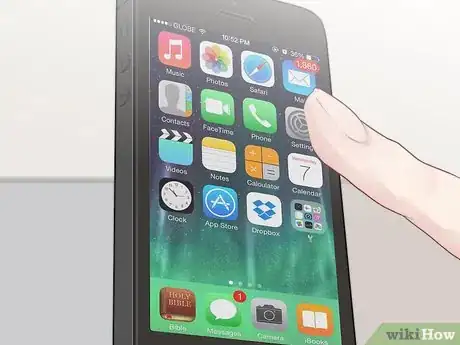
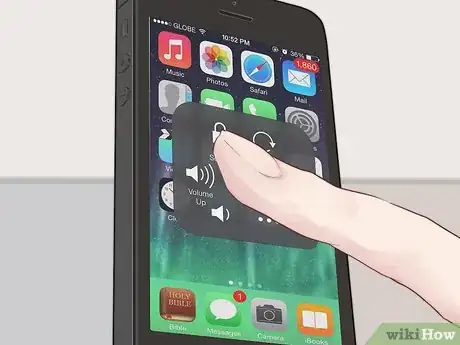
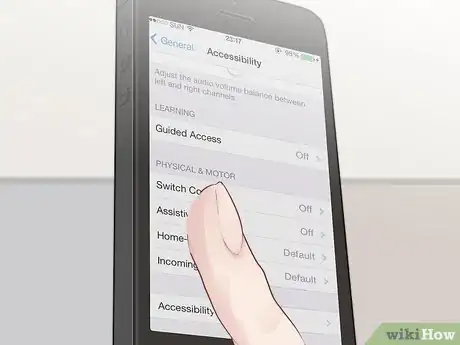
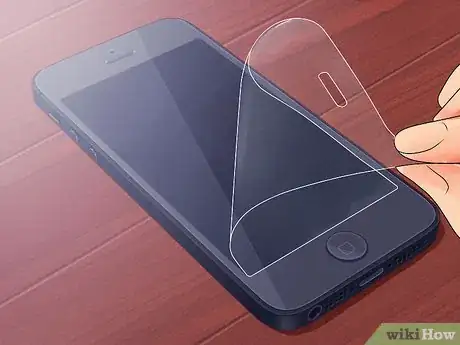

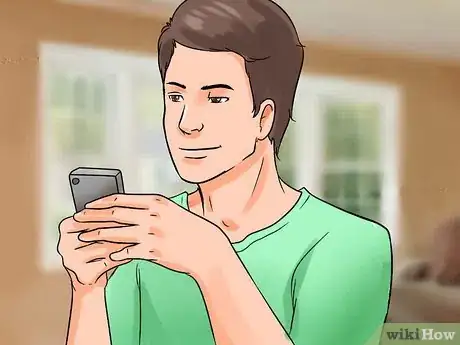
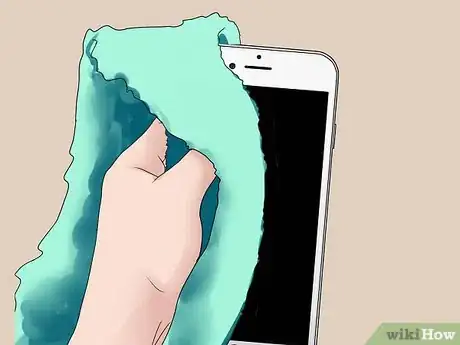
-Step-5-Version-2.webp)

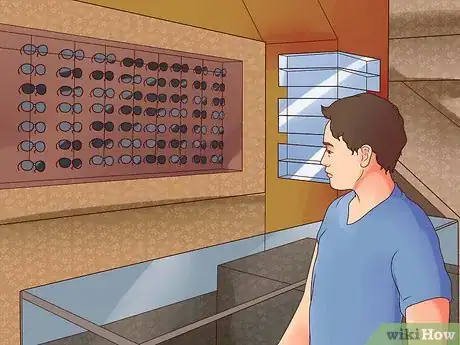





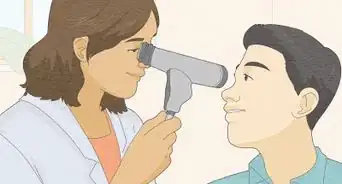
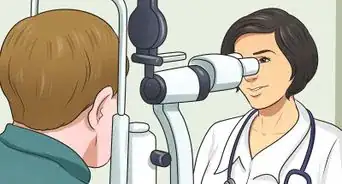



-Step-3.webp)












































